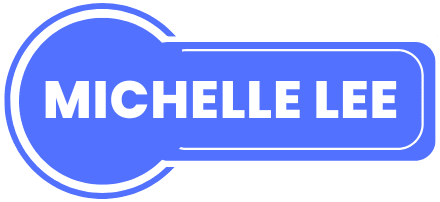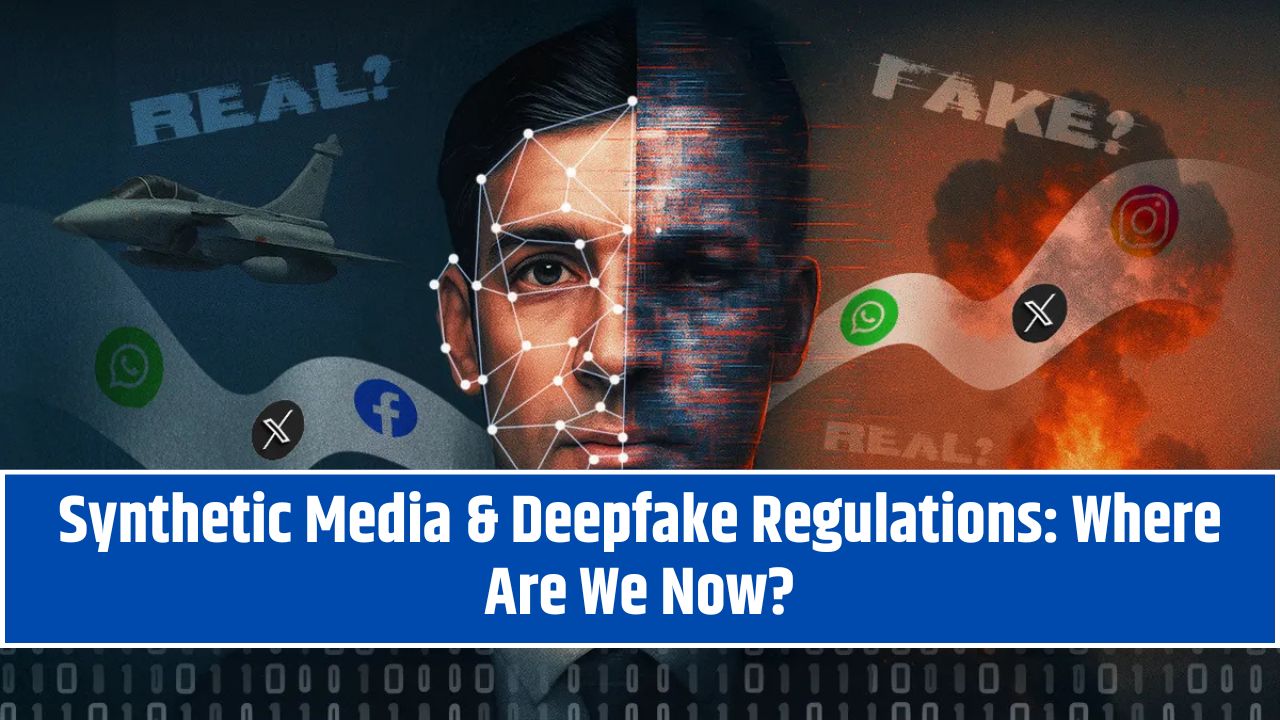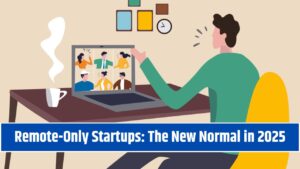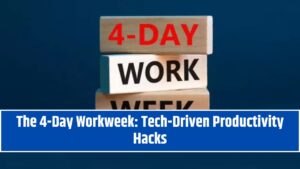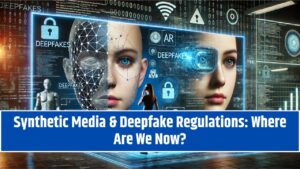No, seriously. That heartwarming video of Tom Hanks singing happy birthday to a random grandma? Deepfake.
That political speech circulating on X that feels just a little too weird? Synthetic.
That AI-generated “podcast” where Einstein interviews Elon Musk? Not even close to real.
We’re now living in a world where synthetic media—audio, video, images, and text generated by artificial intelligence—is getting so realistic, so fast, it’s blurring the line between truth and illusion. And that’s got regulators, tech platforms, creators, and courts all scrambling to answer one massive question:
Where do we draw the line between creativity and manipulation?
Let’s break it all down—what synthetic media really is, the good, the terrifying, and what laws (if any) are in place to keep it in check in 2025.
WHAT EVEN IS SYNTHETIC MEDIA?
Synthetic media = any content created or manipulated by AI rather than a human artist.
It includes:
- Deepfakes (AI-generated faces or voices mimicking real people)
- AI-written scripts or articles
- Virtual influencers (hello, Lil Miquela)
- AI-generated music, voices, and performances
- Fully fake videos of real people doing or saying things they never actually did
In 2025, it’s everywhere—from advertising and entertainment to politics and scams.
THE DOUBLE-EDGED SWORD OF SYNTHETIC MEDIA
Like all tech revolutions, this one has two faces:
The Cool Side:
- Entertainment: Entire animated films made in weeks, not years. Deepfake actors reprising roles posthumously (Carrie Fisher in Star Wars, anyone?).
- Education: Historical recreations—like Lincoln delivering the Gettysburg Address in 4K HD. Wild.
- Accessibility: Real-time voice translation and lip-syncing across languages. Your grandma can star in a Bollywood film without leaving her living room.
- Personal use: Want your wedding speech narrated by Morgan Freeman? There’s an app for that.
The Dangerous Side:
- Disinformation: Political deepfakes used to sway elections.
- Scams: AI voices impersonating family members to trick people into wiring money.
- Non-consensual content: Deepfake porn, often targeting celebrities or even private citizens.
- Loss of trust: If everything can be faked, what can we trust anymore?
SO WHERE ARE THE REGULATIONS IN 2025?
Spoiler: It’s a patchwork mess. But progress is happening.
UNITED STATES: LEADING, BUT LAGGING
What’s Happened So Far:
- DEEPFAKE DISCLOSURE LAWS: Some states (like California and Texas) now require explicit labeling of synthetic content in political ads or public communications.
- CRIMINALIZATION OF NON-CONSENSUAL DEEPFAKES: Federal and state laws now impose criminal penalties for generating explicit fake content involving real people without their consent.
- AI Labeling Guidelines: The FTC has issued guidelines (not yet binding laws) encouraging creators to clearly mark AI-generated media in marketing and advertising.
What’s Still Missing:
- No national standard for labeling synthetic media
- No unified enforcement body
- No clear boundaries around parody vs. harmful misinformation
EUROPEAN UNION: PUSHING HARD WITH THE AI ACT
The EU AI Act, passed in 2024 and now in full effect, is the most comprehensive regulation globally for synthetic media.
Here’s what it includes:
- Mandatory labeling of AI-generated content (visual/audio/text)
- Transparency obligations for platforms distributing synthetic media
- Strict penalties for deepfake misuse, especially in political or biometric contexts
- User rights to know when they’re interacting with AI, not a human
The EU is not playing around. Fines for violations can reach 6% of annual global revenue. Just ask a few social platforms who are already facing audits.
CHINA: CONTROLLED INNOVATION
China has taken a heavy-handed approach:
- All deepfakes must be labeled with digital watermarks
- Platforms are held responsible for distributing fake content
- “Harmful” or “destabilizing” deepfakes are immediately removed—no due process
Critics argue it’s more about controlling narrative than protecting truth. Still, technically speaking, the laws are among the most enforced.
REST OF THE WORLD: PLAYING CATCH-UP
- Canada and Australia have advisory frameworks in place.
- India is still in the consultation stage for AI regulation.
- African nations are starting to discuss digital sovereignty, but laws are sparse.
Translation: Expect more lawsuits than legislation for a while.
WHAT COMPANIES ARE DOING ABOUT IT
Some platforms aren’t waiting for governments:
Meta (Facebook/Instagram)
- Requires AI-labeling for political deepfakes and synthetic ads
- Working on invisible watermarks for AI content
TikTok
- Now scans all uploads for manipulated media before publishing
- Has rolled out a “fake content” flag users can tag
YouTube
- Requires creators to declare if videos are altered or AI-generated
- Plans to auto-label videos with suspected synthetic visuals
But here’s the catch: enforcement is spotty. AI keeps evolving faster than moderation tools can keep up.
WHERE DO RIGHTS STAND FOR INDIVIDUALS?
This is still shaky ground, but here’s what we do know:
| Issue | Legal Protection? |
|---|---|
| Deepfake porn without consent | Illegal in most developed nations |
| Satirical deepfakes | Legal under fair use or parody (case by case) |
| Using a celebrity’s voice/image | Illegal without license (right of publicity) |
| Labeling AI-generated content | Required in some regions; best practice everywhere |
| Suing someone over a fake video | Possible, but hard to win unless there’s proven harm |
THE FUTURE: WHAT’S COMING NEXT?
By late 2025, expect:
- Watermarking standards: Global push for embedded metadata in synthetic media
- Authenticity tags: Blockchain-style verification that a video/photo/audio file is legit
- Lawsuits galore: As political elections heat up, so will the lawsuits around manipulated content
- Synthetic transparency tools: Platforms will offer browser extensions or overlays showing AI-labeled content automatically
And here’s the wild card: AI-generated personalities and influencers are gaining fame. But who’s responsible when they spread misinformation?
TL;DR – SYNTHETIC MEDIA IS HERE. REGULATIONS ARE CATCHING UP. SLOWLY.
We’re in the messy middle.
On one side: massive creative potential.
On the other: trust erosion, manipulation, and legal chaos.
Governments are trying. Platforms are reacting. But the tech is outpacing them all. So for now, the best defense is awareness + transparency + good ol’ fashioned skepticism.
If it feels fake, sounds fake, or seems too perfect to be real? It probably is.
